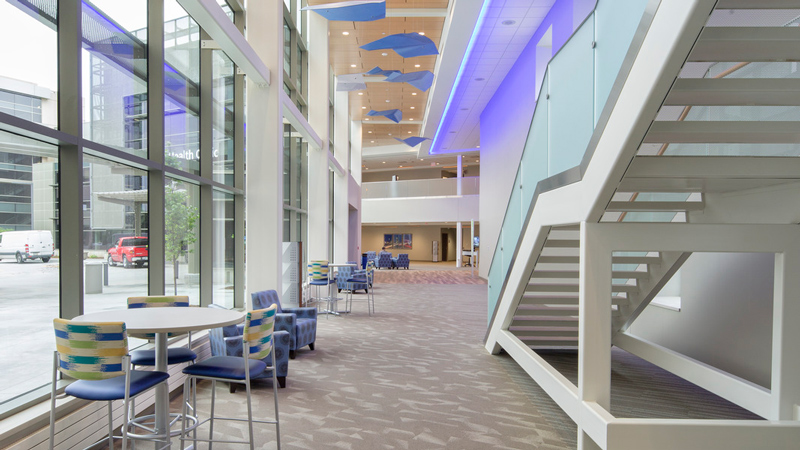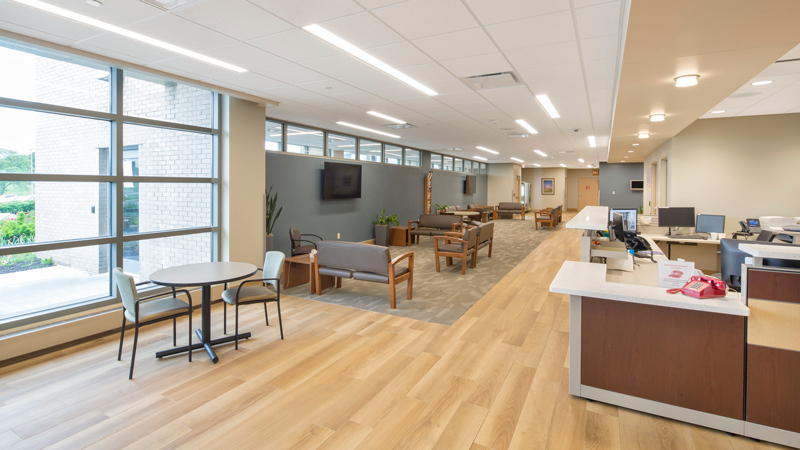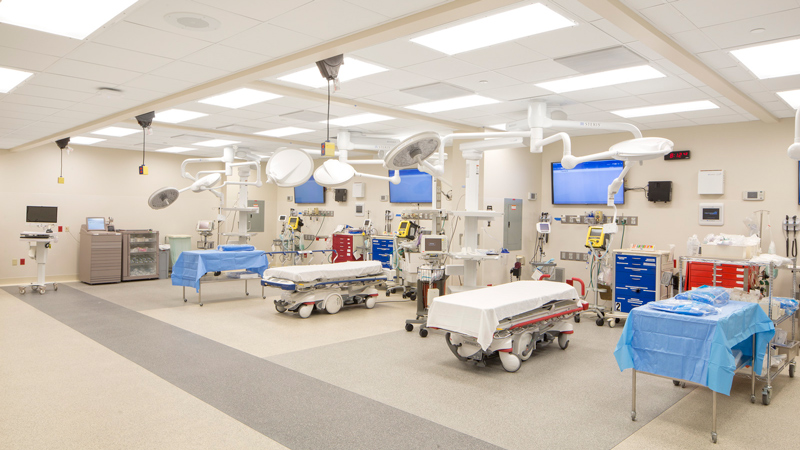Recent Articles
Come together: tips for pulling off a successful hospital consolidation

The following article by Jeff Monzu, AIA, NCARB, senior project manager with LEO A DALY, appeared in the November/December 2018 issue of Medical Construction & Design. It is reproduced here by permission.
As healthcare systems move more services to the outpatient arena, the need for inpatient beds has continued to decline. This shift has driven an increase in consolidation projects, where two hospitals combine facilities to achieve greater efficiency.
Beyond cutting overhead, consolidations also present a unique opportunity for hospitals to rethink established processes and improve how they operate. These are huge projects – messy, complicated and expensive – but if done right, they can take a health system and its patients to new and better places.
The recent consolidation of Creighton University Medical Center and School of Medicine and Bergan Mercy Medical Center for CHI Health in Omaha exemplifies many of the challenges and opportunities of a large consolidation project. Combining a teaching hospital and private-sector hospital into a new academic medical center challenged LEO A DALY’s design team to reconcile two very different company cultures in pursuit of a new way of operating. The $160-million project involved the renovation of 300,000 square feet, the construction of a new 140,000 GSF ambulatory-care center, and the creation of a new home for Creighton University School of Medicine.
In this article, I’ll share some of the key lessons of this project, with the goal of providing useful advice for designers, builders, and hospital administrators planning consolidations.

Embrace early contractor involvement
Consolidations often involve major renovations to existing space. The CHI Health consolidation required renovations in all of the most critical areas at Bergan Mercy – including the Emergency Department, Trauma Center, ICU, Radiology, and Surgery – all while the hospital continued to operate. To meet the fast-track deadline without affecting operations, LEO A DALY relied on early contractor involvement, with construction manager at-risk JE Dunn assisting on construction schedule, budget, and cash-flow analysis from the very beginning.
Early contractor involvement makes the contractor a primary team member, offering feedback on the design that allows the construction process to unfold more quickly and efficiently. Usually this allows some phases of construction to start before we are completely finished with design drawings, reducing project duration and cost in the process. In this project, working closely with JE Dunn especially made a critical difference to the Emergency and Trauma departments renovation.
Working within the ED’s existing footprint, we determined that the layout would need to take the form of several discrete pockets rooms, rather than a single ring of rooms around a central work area. Coordination with the contractor enabled us to create a phasing schedule where some pockets would be sealed off and renovated, while the others stayed open. Through four distinct phases, patient care hopped from one pocket to another, allowing the ED to operate continuously during construction.
Early contractor involvement was critical in helping the design, construction and client teams understand the sequence of temporary closures and access-point changes necessary. Contamination of the surrounding areas was avoided through thoughtful infection-control measures, allowing multiple ED patients per-day to be seen, and the hospital to continue serving the community.

Get the right people at the table
Consolidation requires two hospitals with two very different company cultures to find common ground, and come together on facilities decisions that impact how they operate day-to-day. Getting the right people at the table early in the planning process is critical to making those kinds of big, impactful operational changes.
The CHI Health consolidation involved combining two EDs with different ways of operating. The new design depended on reconciling those differences. Having the right strategic decision-makers involved during master-planning allowed the two to come together, update their processes and improve the patient experience.
Before consolidation, Bergan Mercy’s ED was set up with a triage system where patients would be greeted by an administrator, sent to triage to be examined by a nurse, and then either sent to treatment or returned to the waiting area. Creighton’s intake was experimenting with bypassing triage entirely, meaning that patients were greeted first by a nurse, who determined whether they sat in the waiting area at all. By skipping triage, patients at the Creighton ED saw a medical professional right away, and avoided the stress of having to wait twice if they were not immediately given a room. On the other hand, Bergan’s previous process enhanced the intake staff’s sense of security because much of their interaction with patients was handled in triage rooms.
After a lot of negotiation and compromise, the group decided to embrace Creighton’s model, with security concerns resolved in a welcoming and patient-friendly way. Reaching this point required decision-makers to “cross the aisle” and be open to change. Compromise was only possible because the meetings were attended by high-level stakeholders with big-picture vision and enough authority to make broad changes to the department’s staffing and procedures.
This outcome also required the design team to take an active role in challenging the status quo of both groups, and offer multiple options for how the design could support different ways of operating. Only by challenging stakeholders’ preconceived notions, and offering a range of case-study examples from our own work, were we able to engage all stakeholders in design-thinking with an open mind.

Upgrade your image
One of the design challenges of bringing together two hospitals is creating a new public image for the consolidated entity. Getting it right means harmonizing in visual elements from both. If done correctly, it can help establish the new entity’s brand in the community and create a strong launching pad for the future.
When moving Creighton University’s School of Medicine to Bergan Mercy, one of Creighton’s concerns was establishing their image on a new-to-them satellite campus. Our approach was to embrace Creighton’s colors and branding in the new outpatient building that was erected on the west side of campus. The outpatient building is sited adjacent to MOB II, a medical practice building that was gut-renovated into new academic spaces for Creighton University School of Medicine. That siting created the opportunity to create a dramatic front door for Creighton University on the Bergan Mercy campus, and establish a strong identity for this new academic medical center.
The exterior architecture of the new ambulatory-care building, and the public spaces that connect it to the new academic building, feature a bold use of Creighton’s signature blue color. Blue LEDs illuminate the CHI Health logo, figuratively bringing together the two brands. Inside, blue highlights are used throughout the interior finishes, along with blue accent lighting and blue acrylic clouds. The clinic interiors still meet CHI’s established brand, but with subtle touches to harmonize with Creighton’s.
As a result, the west side of campus now has a distinctly Creighton feel, creating a strong sense of place for the School of Medicine, while respecting its new context.
Get it Together
Consolidations are complicated, but they can also improve how a health system manages resources, how patients experience care, and how the system is perceived by the community. Getting that right requires exquisite coordination between the design, contractor and client teams, trust-building between various client groups, and thoughtful consideration of architectural image. With the right team and a strong design process, a consolidation can be transformative.
Read the issue:
